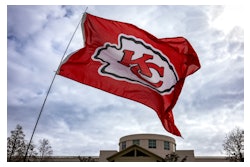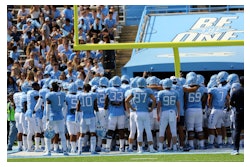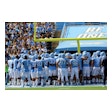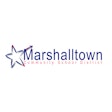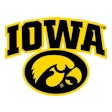Effective Public Relations Is Vital to Successful Public-Private Partnerships
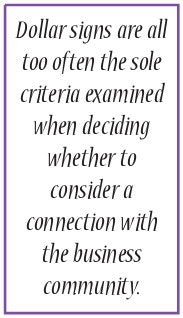
For any type of sports facility, the potential for corporate partnerships is immense. In return for an influx of capital that helps facility owners and developers achieve their goals, corporate partners can be granted a variety of benefits that range from the right to promote themselves as a partner of a specific facility to - in the case of some public/private partnerships - the right to operate their own facility on public land.
For public agencies such as parks and recreation departments, the many financial advantages are tempered somewhat by the responsibility of ensuring that community members concur with the department's chosen direction. Unfortunately, this responsibility is the most overlooked aspect of corporate-partner feasibility research conducted on behalf of public agencies. Of course, the decision to investigate corporate partnerships is primarily guided by the substantial revenues these agreements can generate for communities. However, dollar signs are all too often the sole criteria examined when deciding whether to consider this connection with the business segment of a community. When communities and companies neglect the public-relations portion of their relationship early on, it limits, at best, their potential to work together - and destroys, at worst, public confidence in this form of partnership.
Luckily, parks and recreation agencies that are now thinking about building reciprocal relationships with businesses can learn from other government agencies that are already working with their for-profit stakeholders. The following actual case serves as an example of how lack of public-relations planning undid a worthy corporate partnership and damaged the reputation of a government agency.
As part of a strategic plan to build a new convention center, tourism officials for a large metropolitan city decided to create a new revenue stream to fund their advertising budget. They decided to offer naming rights for the facility to a suitable corporate partner.
A suitable partner was found: A large, local newspaper agreed to pay $13.4 million for the right to have the center named for it. The whole package looked great. A corporate leader that was integrally involved in the community was committing a sizable investment to help the convention and visitors bureau. The sale of naming rights would permit the bureau to increase its marketing efforts, which in turn would attract more conventioneers and the dollars they spend. The end result would be improved economic health for the entire region. Additionally, the partnership would allow the government to improve its services without raising taxes. Finally, $1 from every convention center ticket would benefit worthy causes supported by the newspaper.
It was this last item that, unfortunately, killed the deal. The annual $400,000 that was to be donated to the newspaper's charities was to be generated by a ticket surcharge. While seemingly an insignificant sum, this extra cost outraged event organizers, who did not want their ticket prices raised. They became vocal in their opposition and, eventually, their activism caused the entire deal to collapse.
This surprise ending was brought about by a lack of public-relations foresight. Although everything looked good on paper, the feelings of at least one stakeholder group - convention center event organizers - were not carefully researched. Had the convention and visitors bureau merely taken the extra step of learning the key issues and concerns of this major stakeholder group, the bureau could have reached an agreement or understanding with event organizers, or at least could have renegotiated the ticket surcharge before it became public.
In defense of the bureau, it should be noted that this example is not an isolated incident. A thorough public-relations analysis is the exception rather than the rule in most corporate-partner research studies.
Most public agencies believe, incorrectly, that public relations is only media relations. If the media agrees with your position, the thinking goes, everyone will. In fact, publicity is only one (and the most overrated) aspect of public relations. Rather, effective public relations deals with creating effective relationships with each of your constituencies.
Accordingly, the following list is a sampling of some of the public-relations questions you should ask when investigating whether or not you should partner with corporations:
• Who are your stakeholder groups? • Which of these groups would you identify as key stakeholders? • What issues are most important to your key stakeholders? • How do you think these groups feel about corporate partnerships? Specifically, do you know their opinions of and attitudes toward corporate partnerships? • Is it possible to reach an agreement with each of your key stakeholder groups regarding the issue of corporate partnerships? • For those groups for which an immediate agreement is not possible, can a level of understanding be reached?
These questions should be asked and answers should be learned during two critical stages of your corporate partnership due diligence - the beginning and the end. First, public-relations research should be used to determine whether this method of funding is considered appropriate within the community. Second, a check of major stakeholders should be the final step taken before announcing a specific partnership agreement.
At the beginning of the process, conducting comprehensive research into the relationships an agency has with its community stakeholders will immediately bring key issues to the surface. This advance knowledge will allow officials to address concerns with pertinent opinion leaders and help to prevent these points from surfacing later as a topic of public debate. Other benefits gained from collecting this information are an agency's ability to both project the risk-reward ratio of pursuing corporate partnerships in its community, and clearly identify the extent to which corporate relationships can be integrated into a government infrastructure.
If your research to this point determines that corporate partnerships are a viable funding option in your area, the next step is to create a formal sponsorship policy with input from your organization's key decision-makers. This step will help ward off any internal roadblocks that might arise because of a lack of communication and information regarding a corporate-funding strategy.
The final step before engaging in any solicitations is to create a corporate partnership plan that details acceptable criteria for each specific project. By now, you will have achieved both community and internal buy-in to corporate partnerships and you are ready to seek relationships that will assist you in achieving those dream-list goals you thought were unattainable.
It is at this juncture that the second phase of public-relations research should be utilized. Once an agency begins negotiations with a company, it is common for a contract item to emerge that was not covered in the partnership plan. (This situation was the case in the aforementioned convention center example. Both the visitors bureau and the newspaper thought a $1 ticket surcharge to help local charities was a good idea and proceeded with the plan.) Instead of simply forging ahead, agencies should survey their key stakeholders to determine whether any negative backlash will result from unforeseen contract items before a public announcement is made.
This research does not take an inordinate amount of time, because the agency has already communicated with its key stakeholders earlier in the process and a desirable level of trust on this subject should have been established. Such open communication with opinion leaders does not guarantee that they will agree to any new and unforeseen terms in the potential agreement, but it will afford your agency the opportunity to reach an understanding with groups that would otherwise have voiced their displeasure in a potentially disastrous fashion. At the very least, this due diligence will give you the option of striking the terms from the contract before it is made public.
If you do your public-relations homework in both of these phases, and create both a corporate sponsorship policy and a specific partnership plan, you will know:
• Whether corporate partnerships will be accepted in your community; • The benefits that can and cannot be included in your partnerships; • That the concerns of every constituent group have been addressed; and • That you will not be surprised by activists in your community - and that your partnerships and reputation will thrive.
Public/private partnerships can be a perfect match for many parks and recreation agencies, but directors and their governing agencies must never forget that public-relations pitfalls exist. These potential problems should be diagnosed early and corrected to ensure that mutually beneficial relationships can flourish.














